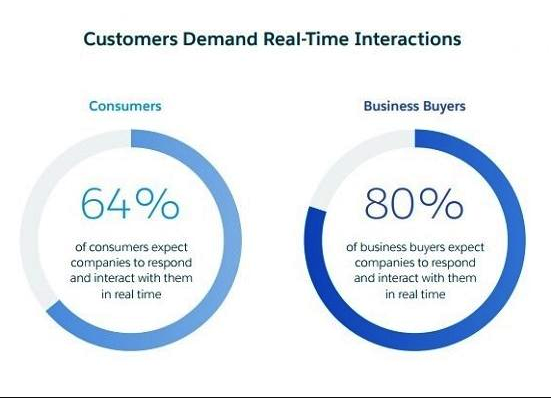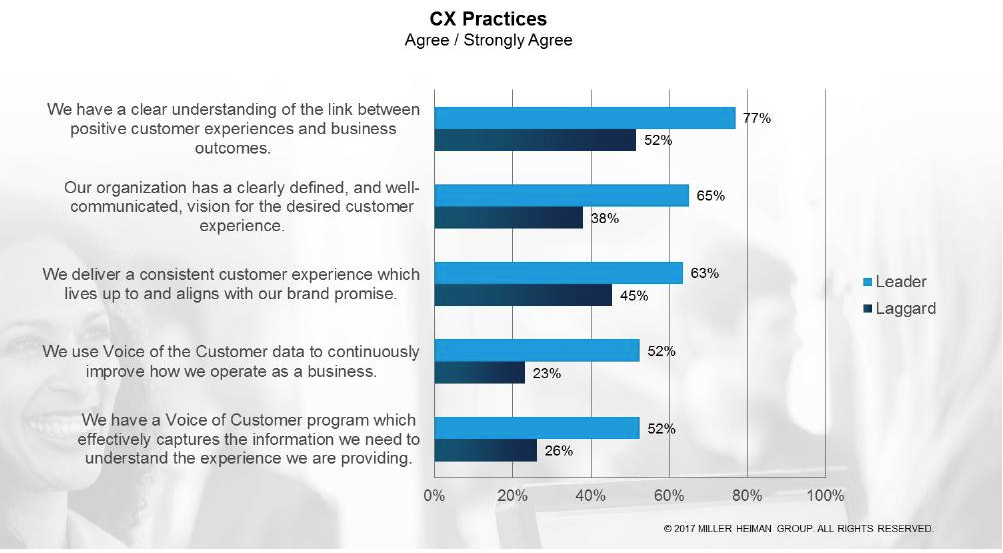In the current climate, customer experience is one of the main battlegrounds for sales organisations, often out-ranking factors like product and price. This can be especially true within the field of B2B sales, where customers are more informed than ever before, have higher expectations than in the past, and where existing customers are perfectly willing to switch to one of your competitors if you fail to provide the kind of experience they demand.
It is, therefore, no real surprise that many sales companies are increasing investment in customer experience training and coaching efforts. In this article, we take a closer look at ten of the customer experience best practices that all B2B sales teams should adopt, in order to stay competitive, meet or exceed expectations, and build loyalty.
1. Make Customer Experience a Priority
The first and most important best practice for B2B sales organisations when it comes to customer experience is actually making it a priority. Interestingly, 89 percent of companies now believe they compete primarily on the basis of customer experience, compared with just 36 percent who thought the same back in 2012. Essentially, this means organisations live and die based on customer experience, so make sure your efforts reflect this.
2. Define the Ideal Customer Experience
Businesses attempting to achieve excellence with regards to customer experience need to go beyond fixing what is currently broken and responding to complaints. Instead, they must take the time to clarify precisely what the ideal customer experience is. It is only after this optimal experience is defined that a B2B sales organisation can take steps towards living up to that vision and delivering on their promise.
3. Provide Tailored Services
In the B2C setting, it makes sense to map the customer journey and plan sales enablement solutions and customer experience training around that. However, with B2B sales, it becomes slightly more complicated. While a basic customer journey map can still be valuable, all customer-facing personnel must also be willing to deviate from this and provide more tailored services, based on the needs of the client, with drastically different sales cycle lengths.
4. Interact With Customers in Real Time
Increasingly, customers are demanding some form of real-time communication to be available to them, allowing for instant responses to questions, queries and complaints. Indeed, according to research from Salesforce, 64 percent of consumers expect this kind of offering to be in place. Yet, real-time communication is actually even more important within B2B sales, where as many as 80 percent of business buyers expect it to be provided.

5. Invest in Customer Experience Training
To deliver a great customer experience, you must be willing to invest in training and this should not be restricted to customer service teams alone. Today, every channel is accountable for the customer experience and this means you need to provide all personnel with the necessary training to meet and exceed customer expectations.
6. Create a Customer Service Coaching Plan
In addition to delivering more general training, creating and implementing a customer service coaching plan will go a long way towards ensuring individual staff members are able to develop and continually improve customer service skills they require. To get the most from your plan, you should use sales enablement solutions to enable sales managers to carry out coaching activities consistently and regularly, using the right technology.
7. Make Use of Voice of Customer Data
In order to understand and improve the customer experience you are currently providing, you need to make use of VoC data. According to the CSO Insights 2018 Customer Experience Study, 52 percent of ‘leader’ organisations – defined as those that had improved customer satisfaction ratings over the past year – make use of this data and have a VoC programme in place, while only half as many ‘laggard’ organisations are able to say the same.
8. Take Advantage of Social Selling
Social selling is where salespeople leverage social media to form meaningful relationships with clients and in B2B sales teams, this can greatly enhance the customer experience. Social networking sites are especially popular with millennials, who now make 73 percent of B2B purchasing decisions. To take advantage of social selling, share useful content and engage with customers in a less overtly sales-driven way on Facebook, LinkedIn and Twitter.
9. Do Not Neglect Mobile Customer Service
Retail customer service has made great strides forward in terms of mobile support, and it is crucial that B2B sales companies do the same. This may mean ensuring web pages are mobile optimised, developing an easy-to-use mobile app for B2B customers, providing facilities for tracking the movement of goods on a smartphone, and so on.
10. Focus On Achieving Consistency
Finally, the key to customer experience is consistency. In particular, business buyers want to know what to expect when dealing with your business, and they also want to know that they are receiving the same level of service and support as your other customers. For this reason, you need to coordinate your post-sale efforts, seek feedback from all channels and ensure that none of these channels are lagging behind the others.
